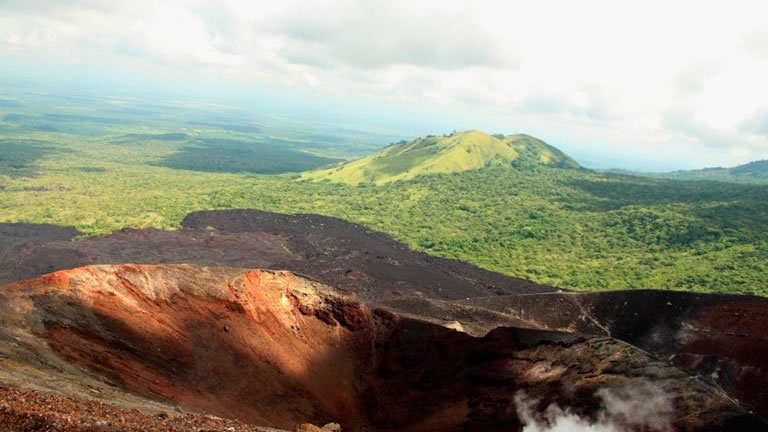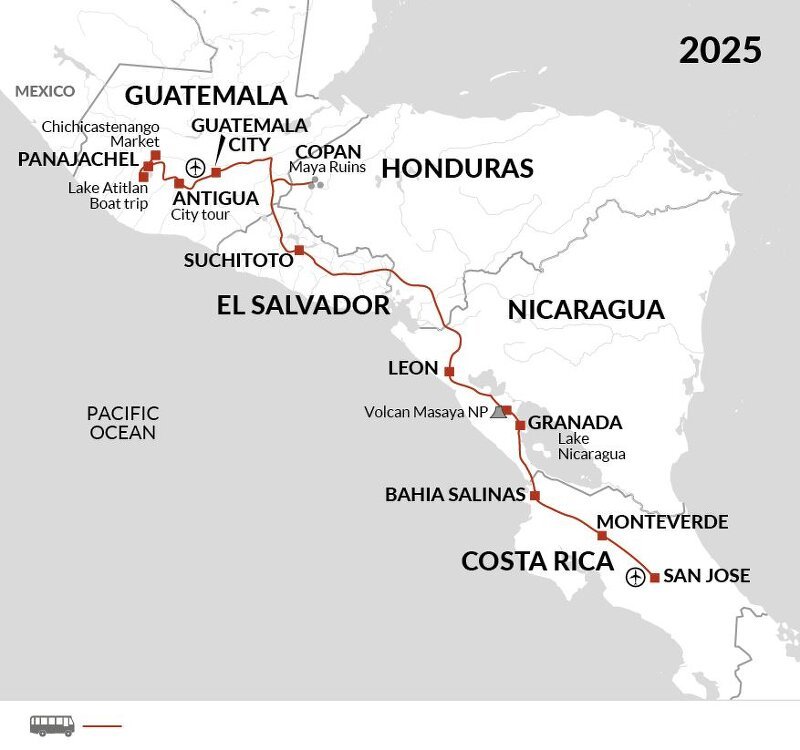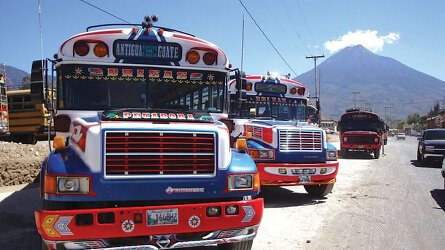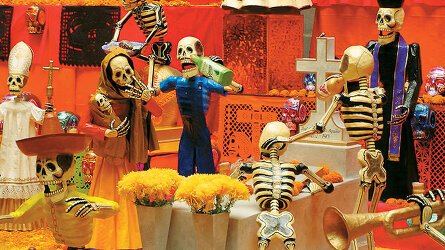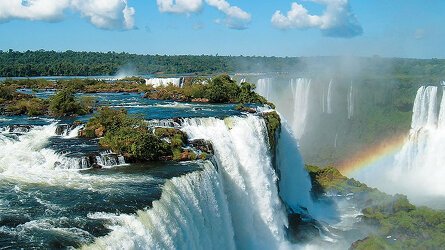Overview
Itinerary
Arrive in San Jose. The cosmopolitan Costa Rican capital lies in a fertile valley at an altitude of 1150 metres. Coffee and sugar cane are big industries here and coffee is even planted between new buildings and along the roadside on the outskirts of the city. Due to the number of evening flights into the international airport, your Leader plans to do the welcome meeting on the morning of day two, and will leave a message in reception with details on timings and everything else that you'll need for the day. There are no other activities planned today, so you are free to arrive in San Jose at any time. If you would like an airport transfer today, you'll need to arrive into San Jose's Juan Santamaria International Airport (airport code SJO) which is 18km, around thirty minutes from our hotel. Should you miss the welcome meeting, your Leader will inform you of any essential information as soon as you catch up. If your flight arrives earlier in the day, perhaps you might choose head out to explore the city which is easy to navigate with a grid pattern of avenues and streets with a good choice of local eateries, which you may choose to sample this evening. The National museum (Museo Nacional De Costa Rica) is also well worth a visit. Stay: Sleep Inn Hotel (Comfortable)
After breakfast we will have a short panoramic tour of San Jose including a walk along Avenida Central and a stop in Mercado Central. We then leave the capital and head on a three-hour drive to Monteverde - one of the most well-known places in Costa Rica to see wildlife. This evening, we will have the adventure of a night walk, in search of nocturnal species such as pacas and tarantulas. Stay: Buena Vista del Rincon (Comfortable) (B)
Rising early, we head into Monteverde Cloud Forest Reserve for a guided walk, searching for a glimpse of the three-wattled bellbird or the Quetzal, whose feathers were traded as valuable items throughout pre-Columbian America. You have the afternoon free to explore this forest haven; you may wish to participate in the many amazing optional activities in the area such as an exhilarating zip-wire experience as you whiz through the canopy, or perhaps exploring the forest on suspension bridges strung at canopy height. Alternatively, the area's butterfly farm and orchid gardens are both well worth a visit. Stay: Buena Vista del Rincon (Comfortable) (B)
This morning we drive three and a half hours to the coastal haven of Bahia Salinas, close to the Nicaraguan border. We have the afternoon free to enjoy the beautiful beach and coastline. Stay: Nandel Beachfront (Comfortable) (B)
Today we wave goodbye to Costa Rica and travel across the border into Nicaragua and onto the colonial city of Granada. The driving time today will be approximately 3-hours. Atmospheric Granada is situated at the foot of Mombacho Volcano on the north-west shore of Lake Nicaragua. It was the first colonial city in Nicaragua, founded in 1524 by the conquistador Hernandez de Cordoba. Its magnificent setting, set off by baroque and renaissance buildings, is a visual delight and a superb location for our next two nights' accommodation.
On arrival, our city tour will take in highlights such as the Parque Central, the monument to the War of Independence, the plaza and the San Francisco Convent. We also aim to visit the Casa des Tres Mundos and the neoclassical Bishop's Palace. The afternoon is at your leisure. Choose to walk down to the central plaza, marvel at the striking yellow cathedral and relax in one of the many restaurants or cafes. Stay: Hotel Patio del Malinche (Comfortable) (B)
This morning is left free. A recommended optional activity is a boat trip through Las Isletas on Lake Nicaragua. This is a great way to explore Lake Cocibolca, also known as Lake Nicaragua. Situated at the foot of the impressive Mombacho Volcano, the area we visit consists of around 360 small volcanic islands which were formed when the Mombacho Volcano erupted about 20,000 years ago. These small islands are inhabited by families who make their living from fishing, while other islands are host to extravagant villas owned by Nicaragua's rich and famous. Along the way, the tour guide will explain a lot about the many birds that can be seen here as well as recalling the history of the area.
This afternoon we will head to Masaya's famous and diverse artisan market, where we can find many products quite unique to Nicaragua. From there, we continue to one of Nicaragua's most stunning natural highlights, the Masaya Volcano National Park, which was the country's first national reserve and is home to two volcanoes and five craters. All being well, we will view the simply astounding geothermal activity at the Santiago Crater. Stay: Hotel Patio del Malinche (Comfortable) (B)
Today we head for Nicaragua's former capital, León where we spend the next two nights. As the country's capital for 200 years, Leon is still considered the intellectual centre of Nicaragua, and was at the heart of the revolutionary years of 1978 to 1989. Lying in the shadow of seven volcanoes, its old buildings and massive cathedral contribute to the elegant atmosphere of a city that seems almost to have been trapped in time. On arrival we will embark on a city tour. Stay: Hotel Austria (Comfortable) (B)
Today has been left free to explore this colonial gem at your own pace. Alternatively, you may choose to enjoy one of the optional excursions available in the area. One option is a hike on the nearby Cerro Negro Volcano - one of the most active volcanoes in Nicaragua. The hike takes approximately 1.5hrs at a moderate pace, and there are stunning views across to the Pacific ocean as well as the surrounding countryside. The fun is in bouncing down the volcano, as we run/jump/walk down through the scree. For something less exertive, Las Penitas Beach is a great place to relax for the day, whilst a visit to San Juan Venado Mangrove Reserve provides the opportunity to spot wildlife including crocodiles, caiman and iguanas. Stay: Hotel Austria (Comfortable) (B)
We have a long drive today as we travel to El Salvador, which totals approximately 13 hours including all of our stops for visits and border crossings. Setting out through the Pacific lowlands around the Gulf of Fonseca, we cross into Honduras for a short time before reaching the border of El Salvador. We will travel through rich agricultural land and stop to visit the town of Ilobasco, famous for its ceramics. We then head for the mountains in the central part of the country, where we will find the lovely colonial town of Suchitoto - our base for the next two nights. Stay: Hotel Almendros de San Lorenzo (Premium) (B)
Nestled between the mountains and Suchitlan Lake, the charming colonial town of Suchitoto, with its cobblestone streets and pretty houses, is a little slice of El Salvador at its timeless best. The town was once at the heart of the country's indigo trade. Today, as a rapidly developing centre for art and culture, it is filled with craft shops and a rich vein of historic and cultural highlights, making it a wonderful place to explore.
Today has been left free for you to spend as you wish. In the morning you may take a boat trip out onto the lake, where over 200 bird species have been recorded, including hawks and falcons. In the afternoon, options include paying a visit to the nearby Cascada Los Tercios - a 30 metre-high waterfall which flows over an impressive cliff of tightly packed hexagonal basalt rocks, or making pupusas, the typical food of El Salvador. These corn or rice 'tortillas' are stuffed with cheese, refried beans, meat, herbs and vegetables, before being grilled on a hot plate. They are sold throughout the country and are part of the staple diet of any self-respecting Salvadorean. Stay: Hotel Almendros de San Lorenzo (Premium) (B)
Travelling by way of the handicraft markets of Las Palmas, we cross back into Honduras today, passing through a landscape of lush vegetation and mountainous valleys until we reach Copan. This lovely village of adobe buildings will be our base tonight, ensuring that we are well-placed to explore the ruins of one of the most important sites of the Mayan civilisation. Stay: Hotel Plaza Copan (Comfortable) (B)
This morning, a local guide will escort us around the spectacular ruins of Copan - one of the richest archaeological sites to be uncovered in Central America and now a UNESCO World Heritage Site. Anyone familiar with Catherwood's incredible drawings (which first appeared in John Stephens' 1841 narrative - 'Incidents of Travel in Central America and Yucatan'), will recognise scenes and objects from this marvellous site. Stephens actually bought the entire site from a local farmer for just $50.
The Great Plaza is one of the most amazing achievements of the Classic Maya period and contains the greatest collection of Maya sculpture anywhere in Meso-America. Next door is the Acropolis - a group of massive pyramidal structures where royal power was once concentrated. Ascending one structure is the famous Hieroglyphic Stairway. Composed of some 2500 individual glyphs, its sides flanked by serpentine birds and snakes, this is the New World's longest inscribed Pre-Colombian text.
Copan has been the subject of exploration and investigation since the 1830s. Remarkable finds continue to be unearthed by archaeologists, making it the most thoroughly researched and understood of all Maya sites.
In the afternoon, we drive to Guatemala City, arriving late in the evening. Stay: Hotel Best Western Stofella (Comfortable) (B)
This morning, we have a short visit of Guatemala City before continuing our journey to the town of Panajachel on the shores of Lake Atitlan, which will be our base for the night. An old volcanic caldera, Lake Atitlan is considered to be one of the most spectacular lakes in the Americas and is certainly the deepest in Central America. Encircled by the volcanoes of Toliman, Atitlan and San Pedro, the lake's fertile shores are sprinkled with small communities of farmers and fishermen who still uphold the traditions of their Maya ancestors.
Panajachel itself is an old Spanish settlement which has attracted visitors to this charming setting for years. Today, it is one of the region's most popular tourist spots, filled with galleries, handicraft shops and cafes, and is a good place to start our exploration of the area.
This afternoon, we head out by boat to explore two of the many Mayan villages surrounding the lake. Santiago Atitlan lies at the base of the volcanic peaks of Toliman and Atitlan, and is home to the Tzutujil Maya people. The Tzutujil can trace their ancestry back to the post-classic period of the Maya (around 900-1500 AD). They still wear a traditional form of dress, with the women in particular sporting colourful blouses with embroidered geometric and bird designs. This is a busy village with lots of visitors and locals going about their business. Our second stop, on our return to Panajachel, is to the quieter island of San Antonio and the textile and ceramic co-operatives found there.
Returning to Panajachel by boat, we have the remainder of the evening to explore the town and enjoy dinner in one of its many excellent restaurants. Stay: Villa Santa Catarina (Premium) (B)
Our journey continues by land to the bustling town of Chichcastenango. Steeped in Mayan culture, the town is famed for its market, where you can buy everything, from chickens and copal, to pigs and pottery. The best way to enjoy the market is to throw yourself into the melee and haggle with the traders, or escape to the beautifully colourful cemetery located just a short walk from the market.
Later, we travel on to our final destination of the trip - Antigua de Guatemala, where we will spend two nights. Famed for its well-preserved Spanish Mudejar-influenced architecture, this graceful colonial city was founded early in the 16th century. Set in a beautiful valley between the volcanoes of Agua, Fuego and Acatenango, its cobbled streets and pastel-coloured buildings make it one of the most charming and picturesque cities in Central America. Despite the damage caused by a series of earthquakes and floods over the centuries, Antigua's colonial heritage has seen it designated a UNESCO World Heritage Site. Stay: Villa Colonial (Premium) (B)
This morning's walking tour takes us to some of the spectacular colonial churches for which the city is famed, including those of San Francisco, Santa Clara, La Merced and Las Capuchinas. Some of the churches have museums and ruins attached which you can choose to enter later in the afternoon. The city is also famous for its jade, not only green but the rarer black and lilac, and we will visit a museum explaining more about this industry.
This afternoon has been left free for you to continue exploring at your own pace. You may choose to do a short hike up Cerro de la Cruz for panoramic views of the city, or enjoy a bit of bargain hunting in what is regarded as one of the best cities for shopping in Central America. There is everything here, from high-end jewellery to street vendors selling locally-produced crafts and textiles. Alternatively, try the choco-museum for a Mayan hot chocolate, which comes with pure chocolate, hot milk, honey and chili powder to mix to your personal taste. Stay: Villa Colonial (Premium) (B)
The trip ends this morning at our hotel in Antigua Guatemala.
There are no activities planned today, so you are free to depart at any time. If your flight is departing later in the day, luggage storage facilities are available at our hotel. If you would like an airport transfer today, you'll need to depart from La Aurora International Airport (airport code: GUA). The drive between the airport and our hotel is only 40km but can take between 1.5 and 4 hours depending on the traffic and the time of day. (B)
Trip Inclusions
- Take in the highlights of five fascinating Central American countries in just two weeks
- Discover rich wildlife, rainforests and volcanoes
- Explore colourful colonial towns and sacred Mayan sites
- Full on paced trips are for travellers who like their holidays packed with activities and experiences, moving on quickly from place to place with lots of early starts and long, busy days. Some may find them tiring, but others get a buzz from packing their precious holiday-time as chock-a - block full of new experiences as possible.
- Accommodation, itinerary and inclusions subject to change.
- Price is for land, cruise and internal flights as specified. Flights not specified are not included
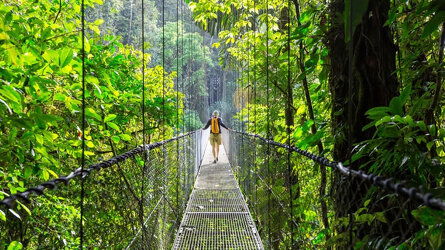
Launching in 1981, Explore offer trips from over 130 countries - from classic small group tours. Read more
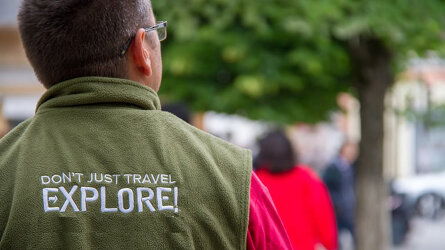
Explore's leaders are more than just your typical guide. They're your local expert are are passionate about sharing their expertise with you. Read more
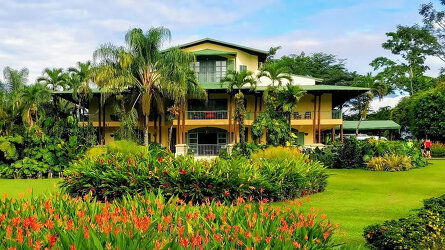
The places Explore stay are every bit as important as the sights they visit and the things you do. Read more
Brochure
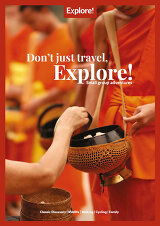
Explore Small Group Adventures (2024-25)
Availability
A definite departure means minimum numbers have been reached for this departure to operate. Your Global Journeys Travel Advisor will check the availability of your departure date when you enquire. Additional savings may apply. We guarantee the lowest price in Australia. T&C’s apply.
Tour & cruises prices are per person. Prices shown have savings applied, are subject to availability and may be withdrawn at any time without notice. Prices and trip information are correct at the time at this point in time, however are subject to confirmation at the time of booking and are subject to change by Explore. For cruise itineraries, cabin images are sourced from Explore. These should be treated as indicative only. Cabin inclusions, upholsteries and room layout may differ to the image(s) shown depending on the ship selected and your sailing dates.
